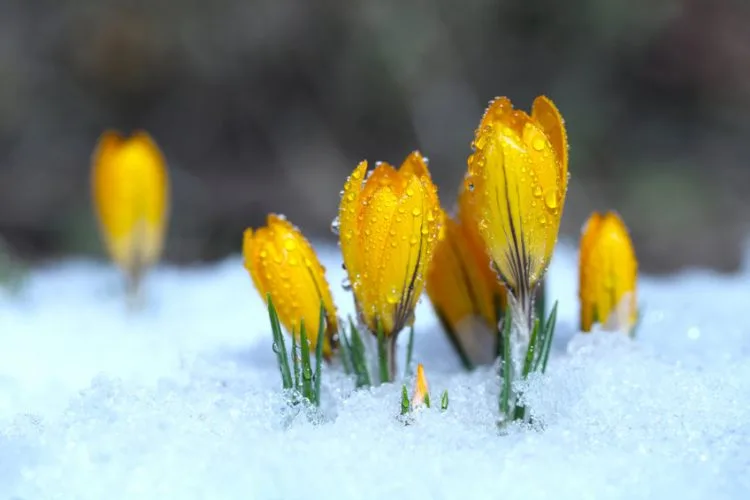Lately, it’s been hard to tell, but freezing temperatures are quickly approaching here in the Dallas/Fort Worth area.
Our weather has been spotty with temperatures ranging from the low 40’s and then jumping back up to the high 70’s, all in the same week.
So, while we are still experiencing some warm days, forecasters predict extraordinarily cold temperatures this winter. With the worst of it hitting sometime in late January.
With that being said, there is still plenty of time to winter-proof your landscape.
Keep reading for 10 things you should do to get ready.
Remove weeds or any infected plants

Most weeds have adapted to freezing temperatures. Therefore, they will not be killed by frost.
The same is true for any infected plants, freezing temperatures may not successfully eliminate these plants, which means when spring comes, everything will spread quickly.
Add a layer of mulch
Right after the first frost, put a layer of thick mulch around your plants. This will stabilize the temperature of the ground.
Temperatures that jump from high to low are damaging to plants. Keeping the ground frozen will keep your plants in dormancy.
Extra mulch also keeps moisture in.
Rake up leaves
Leaves that are left on lawns or in gardens become a breeding ground for mold. When leaves get wet from the rain, dew, frost, or snow; it doesn’t take long for the mold to spread.
RELATED TIP: Fertilizer For Evergreen Shrubs
A great idea is to bag the leaves up and compost them.
Water thoroughly
The reason you need to water thoroughly before a frost is because moist soil stays warmer than dry soil. Water loses heat slowly, which is fantastic for plants.
Warming up too quickly or getting cold too quickly can cause severe damage to plants.
If your plants are in need of water, freezing temperatures can cause irreversible damage.
Wrap tree trunks and cover plants

Cover plants and tree trunks during the day. This will trap the heat from the day in with your plant.
If you wait to cover until after dusk, most of the heat will have already dissipated.
Sheets, blankets, towels, and burlap are all excellent choices for covering plants.
Frost cloths are a popular choice because they are lightweight enough to let air in and at the same time trap in lots of heat.
Dig up summer bulbs
Tender bulbs aka summer bulbs need to be dug up after the first frost.
These include cannas, dahlias, tubers, gladiolus, elephant ears, and caladium.
Let these bulbs dry out for 24 hours before storing them. They should be stored in a dry, cool place, such as an open container or in a paper bag.
Plant spring bulbs
Late fall to early winter is the ideal time to plant hardy aka spring bulbs.
These include tulips, lilies, daffodils, crocuses, and hyacinths.
These flowers store energy in their bulbs and release it after the temperatures freeze.
When planting, the pointed end (the flowering end) goes up, toward the sky. The rounded end should go down, towards the soil.
RELATED TIP: Texas Landscaping Ideas Front Yard
Plant the bulbs as deep as 3 times their height.
Aerate your lawn
It’s a good habit to aerate your lawn before the first freeze.
After a freeze, the aerator will not be able to break through the hard, dry ground.
Aerating your lawn relieves compacted soil, helps turf grow thicker in spring, helps with managing thatch, and increases nutrients.
Prune trees and shrubs

Winter is the best time to prune deciduous plants like evergreen shrubs.
Once these trees and shrubs go dormant, get your pruning shears out.
Remove all dead or diseased parts of the trees or shrubs. Thin out the very dense areas. Prune back to just above a bud or branch.
Remember to wear safety goggles and clean your tools when you’re finished.
Clean, sharpen, and store tools
Clean and disinfect all gardening tools. Dirty tools can easily spread diseases from one plant to another.
Spray metal tools with WD-40 or oil to ensure they don’t become rusty from any winter moisture. You can also sand down and apply oil on any wood handles. This will prevent cracking.
Sharpen your tools before storing them, so they’re ready to go in spring.
Final Thoughts
If you complete this list of ways to winter-proof your landscape, you’ll thank yourself this spring.
Your plants will be protected and the damage will be minimized. All your plants and shrubs will start popping back up when the warm weather hits us.



Comments (0)
Thanks for your comment!
Thanks for your feedback! Your comments have been successfully submitted! Please note, all comments require admin approval prior to display.
Error submitting comment!
There is a problem with your comment, please see below and try again.